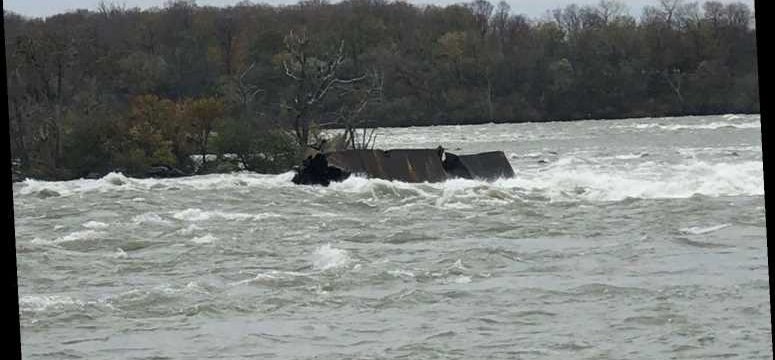A HISTORIC boat trapped on rocks near the Niagara Falls has moved closer to their edge after being dislodged by a Halloween storm.
The 80ft iron vessel, known as a scow, was used for dredging and became trapped on the rocks in August 1918 after breaking free from its tugboat.
But Niagara Parks have now said the intense winds and rushing water of an October 31 storm has moved about 164ft down river.
The scow is now about 650 yards from the edge of the Horseshoe Falls, the largest of the three falls that make up the Niagara Falls, which straddles the US-Canada border.
In a video posted on Facebook, superintendent of heritage Jim Hill said the scow “appears to have flipped on its side and spun around, it's not in the exact same spot as it was” on Friday.
“What we think has happened now is it's turned and twisted in the very heavy current flow of the river and is stuck where it is now,” explained Hill.
The boat has become grounded again on a different set of rocks and Hill said: “It could be stuck there for days or it could be stuck there for years. It’s anyone’s guess.”
The scow has laid in shallow water near the Toronto Generating Power Station in Niagara Falls, Ontario.
The story of how it came to be lodged there is one of the most dramatic in the history of the Niagara Falls.
The vessel broke loose from a towing tug about a mile up river and as it drifted towards the edge of the falls the two men on board Gustave Lofberg and James Harris faced inevitable death.
Swedish immigrant Lofberg later said Harris called to him, "Look, we're going over the falls …. We're lost!”, the Buffalo News reported last year.
In desperation, they opened the bottom dumping doors to let water which succeeded in grounding the scow in shallow rapids.
But the two men were still trapped 800 yards from the shore and so US and Canadian rescuers had to devise a plan to get them to the shore.
A US Coast Guard used a special cannon to fire a line over to the stranded in a 17 hour rescue operation, they were brought ashore and to safety.
Source: Read Full Article






